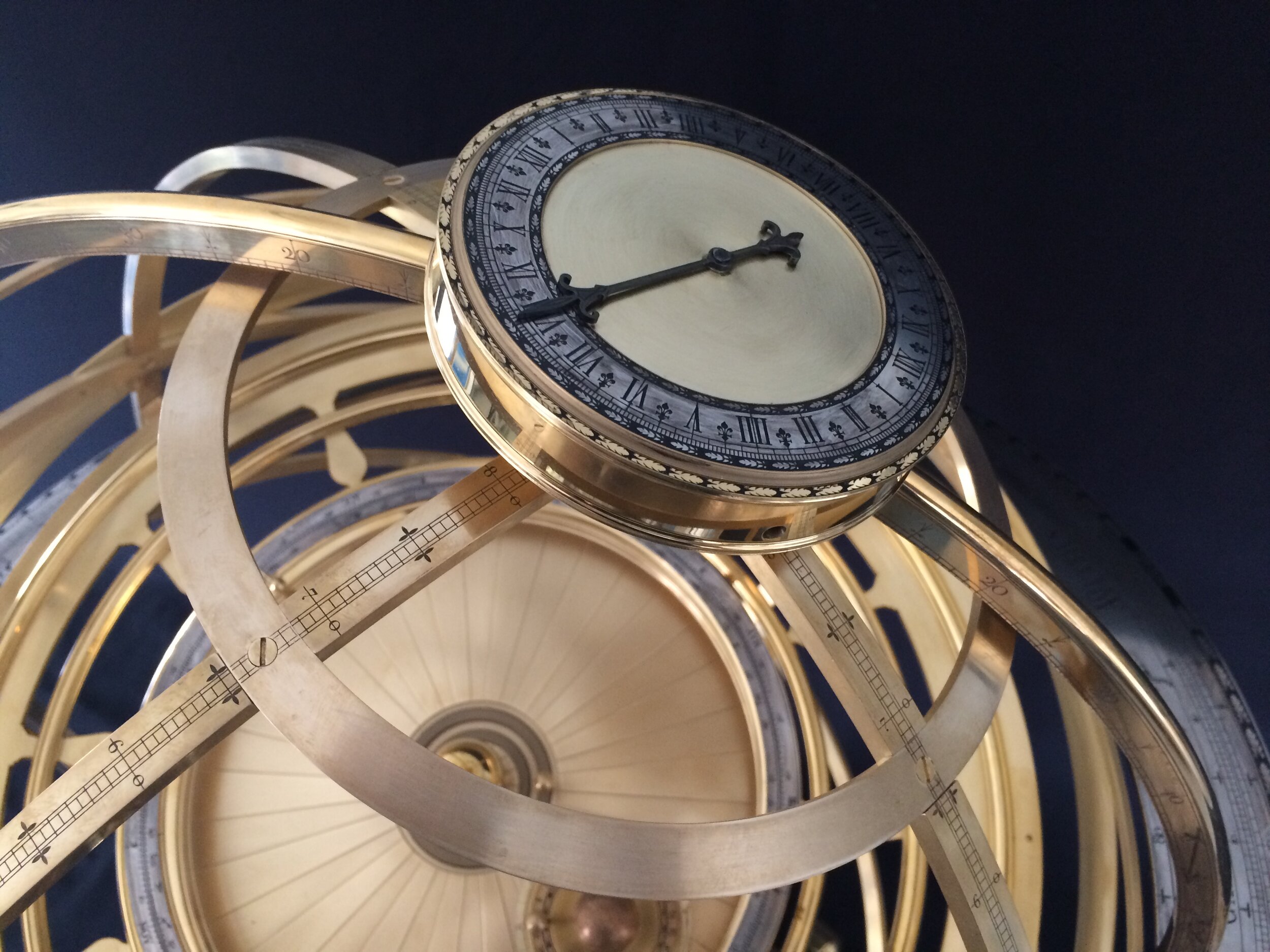Making the perfect armillary
In 1720 Robert Glynn created an Armillary Orrery that now resides in the Museum of the History of science in Oxford. In September 2016 Berry Place Models Commissioned Solve 3D to produce an identical replica, for the Sheikh Abdullah Al Salem Cultural Centre in Kuwait. This replica was to exact in every detail only slightly smaller than the original at 600mm diameter and 1000mm high. The original has an Ivory element used for the rings of Saturn. Clearly it was not possible to use authentic materials in this case, so we substituted with Ivory coloured acrylic. Apart from this small change, all of the materials were authentic (Please see in Archive).
No Drawings or plans of the original were in existence, so the starting point was to visit the Museum of the History of Science in Oxford and with their kind permission, take measurements and photograph the actual piece. There were some challenges even in this apparently simple task. The Armillary was located on a deep window ledge and could not be moved. I was not allowed to touch the piece; I could use only a tailor’s tape measure and a small steel rule to use only as a scale standard in photographs and I was supervised by a member of the museum staff for the whole time.
Recording every detail of the original armillary to the creation of a 3d data set & final engineering drawings (The only set that exists for this piece)
With around 180 photographs taken from every conceivable angle, I spent the next 3 weeks creating a complete assembly as a cad data set. A further 2 weeks recreating the graphics for the engraved areas and another two weeks making a final set of engineering drawings .
From a machined contraction pattern through a foundry sand casting process (New Pro Foundry), to finished brass base.
The hand making process.
Finishing and dry assembly. Precision is essential where you have a number of components requiring a perfect interface in order to function.
Studying the piece as a maker, you develop an understanding of the original thought processes and techniques. You form a strong connection with the maker through 300 years of time, simply understanding the challenges and having the craft skills & technical knowledge to bring it all together. Although the equipment was different in the early eighteenth century, the principles of construction are essentially the same?
Completed Piece showing the 24 hour clock. One of the most difficult things as a maker it to age & distress something you have made so meticulously, but this was what was required. Over time the Armillary will age beautifully.
This was one of the most enjoyable and satisfying pieces I have created. I hope it will be around for another 300 years. Please look at the completed piece in archive.






